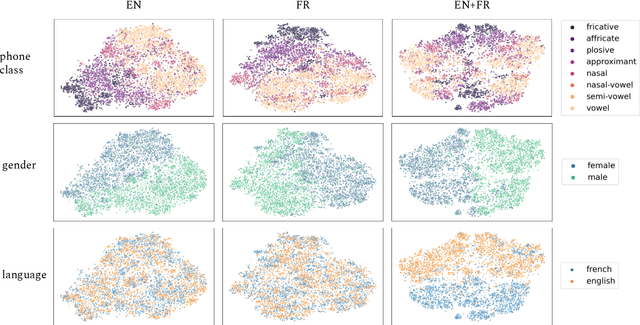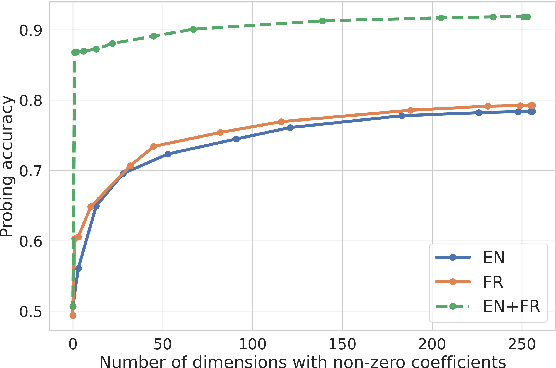Probing phoneme, language and speaker information in unsupervised speech representations
Paper and Code
Mar 30, 2022



Unsupervised models of representations based on Contrastive Predictive Coding (CPC)[1] are primarily used in spoken language modelling in that they encode phonetic information. In this study, we ask what other types of information are present in CPC speech representations. We focus on three categories: phone class, gender and language, and compare monolingual and bilingual models. Using qualitative and quantitative tools, we find that both gender and phone class information are present in both types of models. Language information, however, is very salient in the bilingual model only, suggesting CPC models learn to discriminate languages when trained on multiple languages. Some language information can also be retrieved from monolingual models, but it is more diffused across all features. These patterns hold when analyses are carried on the discrete units from a downstream clustering model. However, although there is no effect of the number of target clusters on phone class and language information, more gender information is encoded with more clusters. Finally, we find that there is some cost to being exposed to two languages on a downstream phoneme discrimination task.
 Add to Chrome
Add to Chrome Add to Firefox
Add to Firefox Add to Edge
Add to Edge